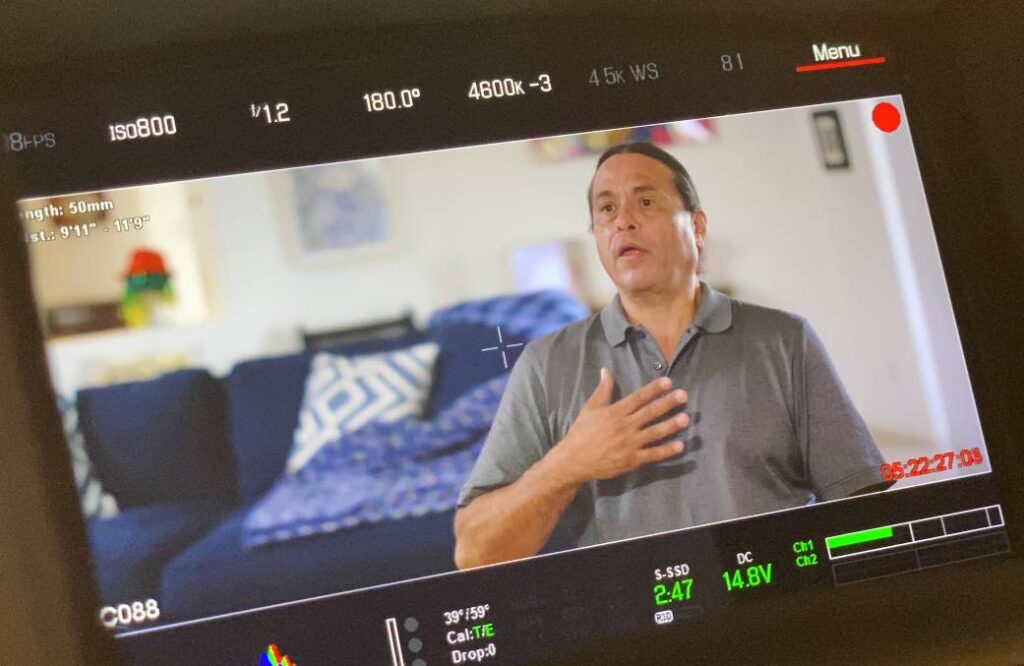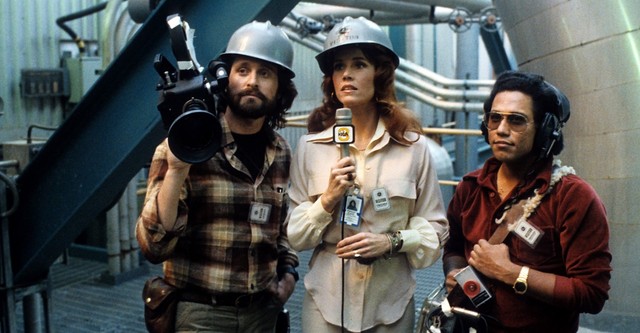Hiroshima. Nagasaki. Mercury, Nevada? The latter was the site for the testing of 928 nuclear weapons on American soil from 1951 to 1992. The fallout is still lethally impacting US citizens today.
The documentary DOWNWIND is Executive Produced by Matthew Modine, narrated by the iconic Martin Sheen, and starring film star Michael Douglas, Patrick Wayne (son of legendary John Wayne) and comedian Lewis Black, the film is a harrowing account of the fallout spread across the country from U.S. nuclear testing in Mercury, Nevada between 1951-1992.
After learning about the fact the United States government put their citizens in peril from these tests, directors Mark Shapiro and Douglas Brian Miller wanted to know who in fact was directly impacted. Soon enough, they learned the US government referred to Downwinders as a “low use segment of the population.”
They also learned the location of the Test Site rests on sacred Western Shoshone land, by treaty. But from 1951-1992, the government restricted the area and conducted large-scale atomic weapons tests that obliterated the environment and exposed people and livestock to deadly fallout.
At the start of the film, the directors initially focused on St. George, Utah, 135 miles west of the Test Site and a city that had experienced tremendously high leukemia and cancer rates. St. George was also the location for a number of Hollywood blockbusters, including the Howard Hughes epic The Conqueror (1956), where half the cast and crew reportedly died of cancer, including John Wayne.
Patrick Wayne talks about his dad’s work on this film and recalls how during the filming there was plenty of manipulation on the terrain’s sand and dirt for many of the stunts. This, mixed with fallout from the testing, made that environment quite toxic – yet most people were not aware of this. When looking at the number of cast members who dief of cancer, it is almost impossible not to make a connection.
Similarly, local activists and citizens describe growing up in St. George during the early years of testing. Medical social worker, Claudia Peterson, describes how she lost her daughter to cancer at age six. She also lost a sister, and at least six other family members to cancer. Here, it is again clear the impact these testings had on her family and the overall community. Hers is not the only story of families having one or more members contract cancer and losing their lives to this terminal disease.
Down in California, we meet Ian Zabarte, an activist and member of the Western Bands of Shoshone Nations. He has been an actively speaking about how the Indigenous communities and the environment around them have destroyed by nuclear weapons testing and nuclear material disposal. He has been clear in vocalizing how the Department of Energy and cooperating agencies inflict conditions that are essentially, bringing about the destruction of Shoshone Nation. He is keen on having all impacted communities, not just the Shoshone Nation, followed long term for health consequences. Those affected also need radiation exposure compensation re-authorization (RECA).
Interestingly, the directors also were able to speak with a Testing Sites Public Affairs representative. This person reminds us that the knowledge we have about nuclear tests now is much different than what the government had in the earlier days. Nonetheless, when we see animal testing done in the 1950s and 1960s, we notice these animals were in fact heavily impacted by the testing fallout – some of them also died from this exposure. It is difficult to reconcile this information with the way the government disseminated information to directly impacted communities.
Archival footage from government videos used to ‘educate’ citizens, make it sound like radiation will cause no direct harm. In fact, there was evidence radiation and nuclear testing could cause major harm to living beings – yet, it was ignored. It also does not make logical sense why the testing kept going on for so long. To show how the government valued some lives more than others, the filmmakers present us with information on how the US government essentially chose to test in Southern Utah to avoid testing in Southern California. As one of the citizens whose health has been impacted by nuclear testing observes, it appears some lives are more expendable than others.
There is so much to question in how such powerful governments make decisions about nuclear testing knowing full well it can lead to environmental contamination and significant health impact on its citizens no matter how big or small the communities are. The US currently allocates around $60 Billion USD per year on nuclear arsenal. Let us not even get into other countries, like Russia, with even less transparent data on nuclear testing and its impact on Russian citizens.
Recently, Hollywood stars like Michael Douglas have also made it a personal crusade to bring these issues to light. Douglas takes part in this film as an activist and an actor. One of his early films was The China Syndrome (1979), a fictionalized look at the result of a nuclear meltdown, where reactor components melt all the way into the underlying earth… “all the way to China.” He observes how this fictionalized incident eventually happened, so to speak, that same year in the Three Mile Island Accident. Douglas has now been the UN Messenger for Peace speaking about this and other important issues since 1989.
The directors Mark Shapiro and Douglas Brian Miller put together a very interesting, thought provoking, and at times frustrating look at the impact nuclear testing has had and continues to have on US citizens. As a citizen of the world, the film made me think of how all governments tend to make decisions based on ‘politics’ and posturing purposes without input from those most directly affected. DOWNWIND is certainly a good film for those of us who appreciate informative and impactful documentary filmmaking.
DOWNWIND had a one-time only World Premiere Spotlight Screening and panel discussion at the Slamdance Film Festival. The film focuses on the dangers of the nuclear testing program over the years, and highlights the personal losses from the fallout across California, Nevada and Utah.









